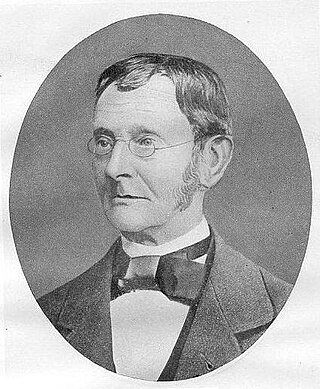| |||||
| Centuries: | |||||
|---|---|---|---|---|---|
| Decades: | |||||
| See also: | List of years in India Timeline of Indian history | ||||
Events in the year 1829 in India.
| |||||
| Centuries: | |||||
|---|---|---|---|---|---|
| Decades: | |||||
| See also: | List of years in India Timeline of Indian history | ||||
Events in the year 1829 in India.

Ram Mohan Roy was an Indian reformer and writer who was one of the founders of the Brahmo Sabha in 1828, the precursor of the Brahmo Samaj, a socioreligious reform movement in the Indian subcontinent. He was given the title of Raja by Mughal emperor Akbar II.

Satet,Satit or Satjet, Satjit in Ancient Egyptian, Greek: Satis, also known by numerous related names, was an Upper Egyptian goddess who, along with Khnum and Anuket, formed part of the Elephantine Triad. A protective deity of Egypt's southern border with Nubia, she came to personify the former annual flooding of the Nile and to serve as a war, hunting, and fertility goddess.

Franz Heinrich Ludolf Ahrens was a German philologist.

Sati or suttee was a Hindu historical practice in which a widow sacrifices herself by sitting atop her deceased husband's funeral pyre. It has been linked to related Hindu practices in regions of India. Greek sources from around c. 300 BCE make isolated mention of sati, but it likely developed into a real fire sacrifice in the medieval era within northwestern Rajput clans to which it initially remained limited, to become more widespread during the late medieval era.

Lieutenant General Lord William Henry Cavendish-Bentinck, known as Lord William Bentinck, was a British military commander and politician who served as the governor of Fort William (Bengal) from 1828 to 1834 and the first governor-general of India from 1834 to 1835.

The Renault Vel Satis is a five-passenger, five-door executive hatchback, manufactured and marketed by Renault from 2001-2009 over a single generation, sharing its platform with the Laguna II and Espace IV and manufactured on the same assembly line in Sandouville, France and noted for its unorthodox styling approach to the luxury segment.
Sati or SATI may refer to:

Sati, also known as Dakshayani, is the Hindu goddess of marital felicity and longevity, and is worshipped as an aspect of the mother goddess Shakti. Sati was the first wife of Shiva, the other being Parvati, who was Sati's reincarnation after her death.

The Shakta pithas, Shakti pithas or Sati pithas are significant shrines and pilgrimage destinations in Shaktism, the mother goddess denomination in Hinduism. The shrines are dedicated to various forms of Adi Shakti. Various Puranas such as Srimad Devi Bhagavatam state the existence of a varying number of 51, 52, 64 and 108 Shakta pithas of which 18 are named as Astadasha Maha (major) in medieval Hindu texts.
The Kalika Purana, also called the Kali Purana, Sati Purana or Kalika Tantra, is one of the eighteen minor Puranas (Upapurana) in the Shaktism tradition of Hinduism. The text was likely composed in Assam or Cooch Behar region of India and is attributed to the sage Markandeya. It exists in many versions, variously organized in 90 to 93 chapters. The surviving versions of the text are unusual in that they start abruptly and follow a format not found in either the major or minor Purana-genre mythical texts of Hinduism. Various types of animal sacrifices for devi are detailed in the Purana.
Criticism of Hinduism has been applied to both historical and current aspects of Hinduism, notably the caste system and sati.
Sati, literally "memory" or "retention", commonly translated as mindfulness, "to remember to observe," is an essential part of Buddhist practice. It has the related meanings of calling to mind the wholesome dhammas such as the four establishments of mindfulness, the five faculties, the five powers, the seven awakening-factors, the Noble Eightfold Path, and the attainment of insight, and the actual practice of maintaining a lucid awareness of the dhammas of bodily and mental phenomena, in order to counter the arising of unwholesome states, and to develop wholesome states. It is the first factor of the Seven Factors of Enlightenment. "Correct" or "right" mindfulness is the seventh element of the Noble Eightfold Path.

The Vishalakshi Temple, also known as Vishalakshi Gauri Mandir and Vishalakshi Amman Kovil, is a Hindu temple dedicated to the goddess Vishalakshi at Mir Ghat on the banks of the Ganges at Varanasi. It was Built and Maintained by Nattukottai Nagarathar a mercantile community from Tamil Nadu
Sati-ye Sofla is a village in Shaban Rural District, in the Central District of Meshgin Shahr County, Ardabil Province, Iran. At the 2006 census, its population was 188, in 38 families.
Sati-ye Vosta is a village in Shaban Rural District, in the Central District of Meshgin Shahr County, Ardabil Province, Iran. At the 2006 census, its population was 55, in 9 families.
Raja Sir Radhakanta Deb Bahadur KCSI was a scholar and a leader of the Calcutta conservative Hindu society, son of Gopimohan Deb of Shovabazar Raj who was the adopted son and heir of Maharaja Nabakrishna Deb of Shovabazar Raj.

Manikarnika Ghat is one of the holiest cremation grounds among the sacred riverfronts (ghats), located on the banks of River Ganga, in the city of Varanasi in the Indian state of Uttar Pradesh. In Hinduism, death is considered a gateway to another life marked by the result of one's karma. It is believed that a human's soul attains moksha, and hence breaks the cycle of rebirth when cremated here.
Sati-ye Olya is a village in Shaban Rural District, in the Central District of Meshgin Shahr County, Ardabil Province, Iran. At the 2006 census, its population was 183, in 39 families.
Rani Sati, also identified as Narayani Devi and referred to as Dadiji (grandmother), is said to be a Rajasthani woman who lived sometime between the 13th and the 17th century and committed sati (self-immolation) on her husband's death. Various temples in Rajasthan and elsewhere are devoted to her worship and to commemorate her act.
Tattvachintamani is a treatise in Sanskrit authored by 14th-century CE Indian logician and philosopher Gangesa. The title may be translated into English as "A Thought-jewel of Truth." The treatise is also known as Pramāṇa-chintāmaṇi.